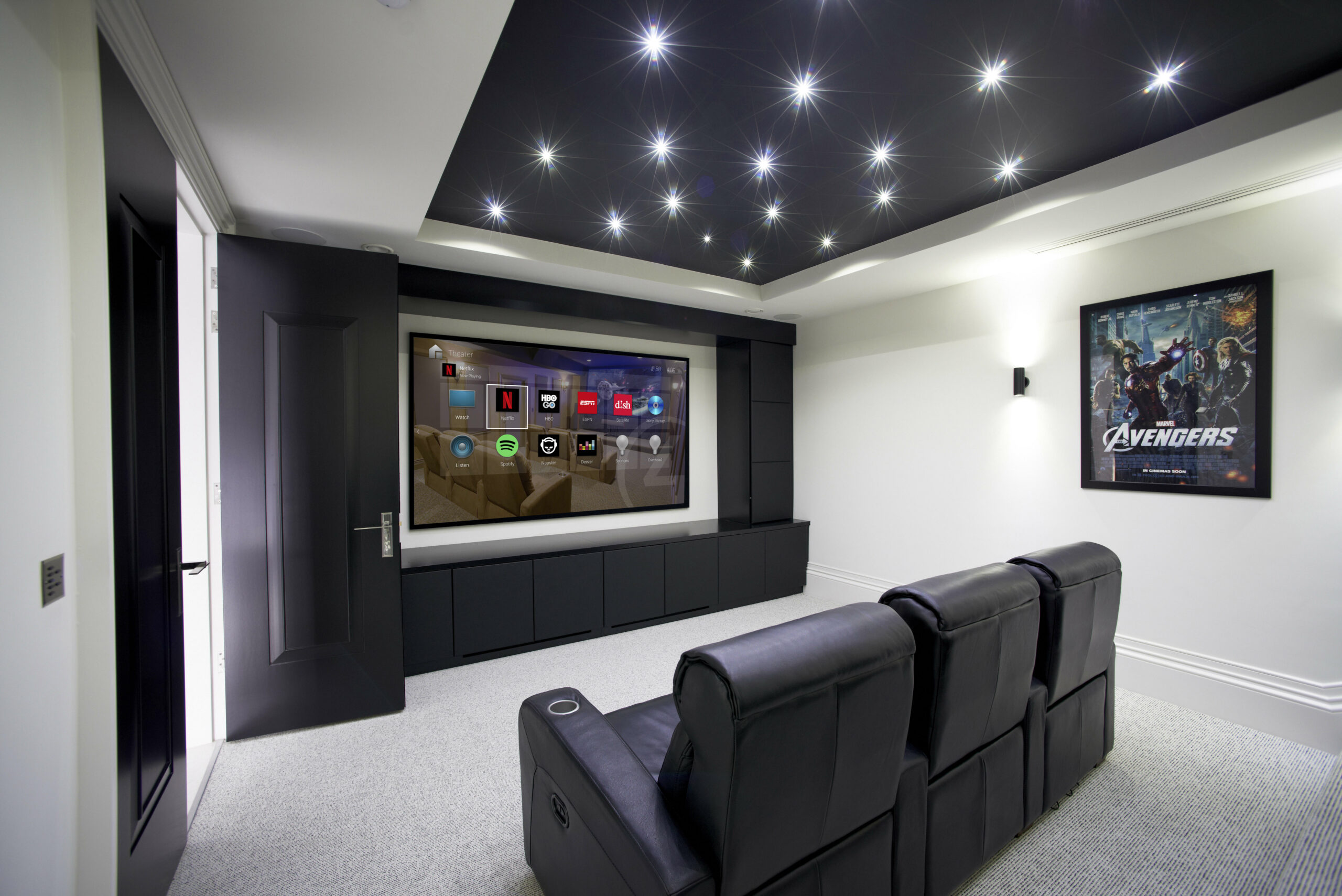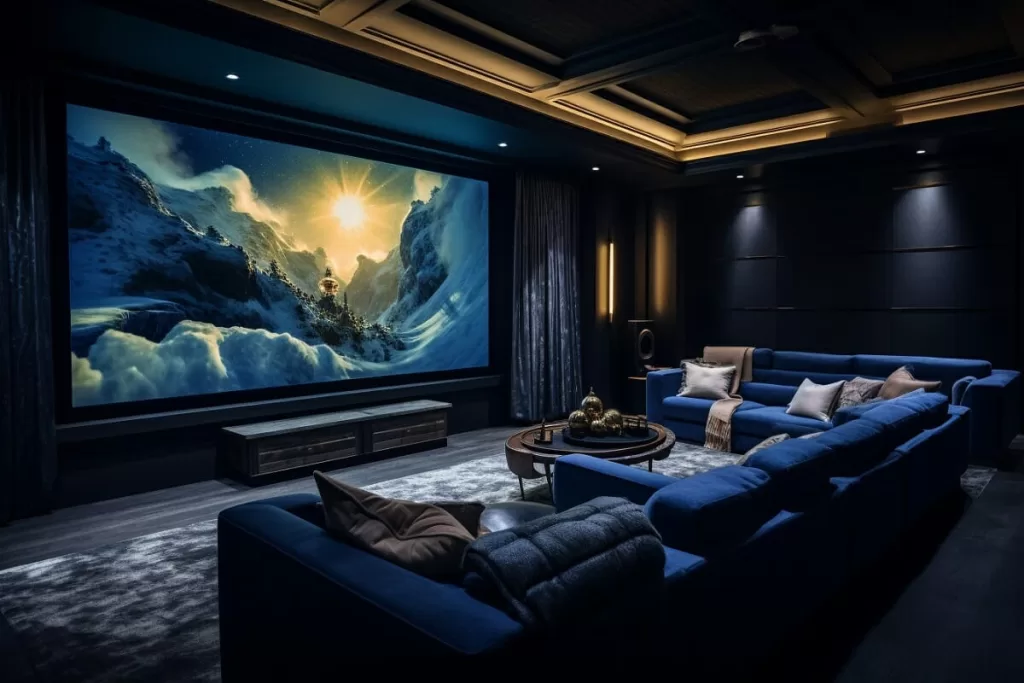Upgrade Your Living Space with Tampa Home Theater Installation
Wiki Article
Home Theater 101: Everything You Need to Know for a Cinematic Experience in the house
Creating a home theater that rivals the motion picture experience of an industrial theatre involves mindful factor to consider of numerous components, including display selection, audio systems, and space layout. Whether you are contemplating the ideal display dimension or the ins and outs of border sound, understanding these basics is crucial.Choosing the Right Screen
When establishing a home cinema, selecting the best display can make or damage the viewing experience - tampa home theater. The screen works as the focal point of your configuration, influencing photo top quality, watching angles, and general aesthetic. Trick variables to consider consist of display resolution, dimension, and kindInitially, figure out the ideal display dimension based on your area dimensions and seating distance. Next off, choose between different screen types, such as fixed-frame, mechanized, or retracting displays, each offering unique advantages.
Resolution is another vital factor. For a really immersive experience, consider a screen designed for 4K and even 8K material, making certain sharpness and quality. Additionally, think about the screen's gain, which influences brightness and contrast; a greater gain can enhance illumination in well-lit spaces, while a reduced gain may be much more appropriate for darker environments.
Choosing Sound Equipment
Audio tools is an essential part of any type of home movie theater system, considerably improving the total watching experience. The option of audio gear can establish the deepness, quality, and immersion of noise, crucial for developing a cinematic atmosphere.When choosing audio devices, think about a border audio system, which usually consists of a receiver, several speakers, and a speaker. A 5.1 or 7.1 channel system is recommended, where the initial number stands for the speakers and the 2nd the subwoofer, giving an immersive soundscape. The receiver is the heart of the system, handling sound and video clip signals, and ought to sustain modern formats like Dolby Atmos for an enhanced spatial experience.
Quality audio speakers are important; look for versions that offer a well balanced audio account with good bass action. Floor-standing speakers can create richer noise, while shelf alternatives conserve area. Additionally, consider cordless choices for convenience of setup, although wired systems typically provide exceptional efficiency.

Optimum Seating Arrangements
Developing a suitable home theater experience hinges dramatically on optimal seating arrangements. The setup of seats plays an important role in both convenience and viewing top quality, directly impacting the total cinematic experience.First, consider the display size and watching distance. A common guideline is to place seats at a distance about 1.5 to 2.5 times the diagonal dimension of the display. This makes certain an immersive experience without stressing the eyes.
Next, elevation is vital. If your seating remains in a tiered hop over to these guys style, the back rows ought to be more than the front to stay clear of blockages. For flat seats, make sure that the front row is not too near the display, and that everybody has a clear line of sight.
Moreover, think about the arrangement in regards to social dynamics. Team seating can improve the communal experience, while private seats may be liked for personal viewing.

Finally, focus on comfort with ergonomic seating that sustains extended viewing durations. Incorporating recliner chairs or supported seats can substantially enhance the experience, making the home cinema a favored location for both entertainment Discover More Here and relaxation.
Lighting and Setting
Effective illumination and setting are important elements of a properly designed home cinema, as they substantially affect the checking out experience. The right lighting can boost the cinematic feel, while bad selections can diminish it. For optimal results, think about a split lights strategy that includes ambient, task, and accent lighting.Ambient lighting offers general illumination, making sure that the room is not entirely dark, which can stress the eyes. Dimmer buttons are very recommended, enabling adjustments based on the content being watched. Task lighting, such as wall sconces or floor lights, offers functional illumination for tasks like analysis or browsing the area without interfering with the general environment.
Accent illumination can be used to highlight architectural attributes or produce focal points, including deepness and interest to the area. LED strip lights behind displays or along shelves can provide a refined glow that enhances the aesthetic experience without overwhelming the visitor.
Wiring and Installation Tips
Homepage A well-planned electrical wiring arrangement is critical for attaining optimum performance in your home cinema system. Appropriate wiring not just makes sure high-grade sound and video clip signals but likewise improves the overall aesthetic of your room. Begin by drawing up your layout, recognizing where each component will certainly be positioned, including your display, speakers, and receiver.When picking cable televisions, focus on premium, properly assessed circuitry to decrease signal loss. HDMI cable televisions need to be utilized for video links, while speaker cord should match the specifications of your speakers and amplifier. Go with in-wall ranked cables to adhere to safety standards and keep a tidy look.

Final Thought
In recap, developing an extraordinary home movie theater experience requires careful factor to consider of various aspects, consisting of display choice, audio equipment, seating arrangements, lights, and circuitry. Each component plays a crucial duty in accomplishing optimum performance and setting, inevitably improving the pleasure of home entertainment. By prioritizing these factors, a cinematic ambience can be effectively reproduced, enabling immersive seeing experiences that measure up to standard theater setups. Attention to information in each location is essential for total contentment.Creating a home cinema that matches the motion picture experience of a business theatre includes cautious consideration of numerous parts, including display option, sound systems, and room design.When establishing up a home theater, selecting the ideal display can make or break the watching experience. Next, pick in between different display kinds, such as fixed-frame, mechanized, or retracting displays, each offering distinct benefits. For a truly immersive experience, think about a display made for 4K or also 8K content, guaranteeing intensity and quality.In recap, producing an extraordinary home movie theater experience needs mindful factor to consider of numerous elements, including screen selection, audio equipment, seating plans, lighting, and wiring.
Report this wiki page